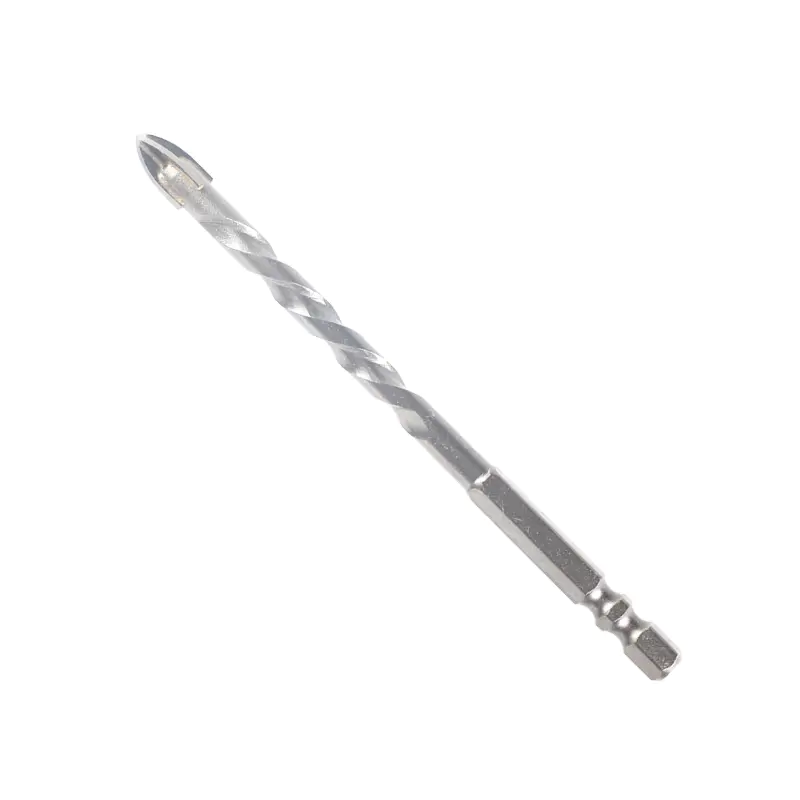2025-07-11
Impact of Glass Thickness on Drilling Difficulty
Drilling glass requires careful technique and the right tools to avoid cracking or shattering. The thickness of the glass plays a significant role in how a Glass Drill Bit performs. Thinner glass tends to be more fragile and requires delicate handling to prevent chipping around the drilled hole. Thicker glass, on the other hand, demands greater precision and control because the drill bit must penetrate deeper while maintaining stability, making the risk of breakage or bit wandering higher.

Drilling Thin Glass: Precision and Care Needed
When working with thin glass, usually less than 4mm thick, the primary challenge is to avoid exerting too much pressure that could cause cracking. Glass Drill Bits designed for fine, delicate work with sharp, spear-shaped tips are ideal here. The bit must move slowly and be cooled continuously with water to reduce heat buildup. Drilling speed should be kept low to reduce vibrations and stress on the fragile surface, resulting in clean holes with chipping.
Drilling Medium-Thickness Glass: Balance Between Speed and Control
For medium-thickness glass, ranging approximately from 4mm to 10mm, the drilling process becomes more demanding. The bit must remain sharp, and the drilling technique must balance speed with steady pressure. Adequate cooling remains crucial to avoid heat-related stress. Using a drill guide or clamp is often recommended to prevent bit slippage and ensure precise hole placement. Medium-thickness glass is less prone to cracking than thin glass but still requires careful handling.
Drilling Thick Glass: Challenges of Stability and Heat
Drilling through thick glass, which exceeds 10mm, presents a great challenge for a Glass Drill Bit. The increased material volume causes greater friction and heat generation, which can cause the bit to dull faster and the glass to fracture if not managed properly. Slow drilling speeds and continuous water cooling are essential to maintain the bit’s effectiveness and preserve the glass's integrity. Additionally, thick glass demands bits with robust construction, such as diamond-coated tips, to sustain prolonged cutting without damage.
Techniques to Improve Performance Across Thicknesses
Regardless of thickness, the use of water as a coolant and lubricant is vital to successful glass drilling. It reduces heat, prevents dust buildup, and reduces the risk of cracks. Using incremental drilling—starting with a smaller pilot hole before moving to a larger bit—can also improve control and reduce stress on the glass. Consistent pressure without sudden force and a stable drill setup further enhance performance. Choosing the right size and type of Glass Drill Bit for the thickness involved ensures results.
Wear and Tear of Drill Bits Based on Glass Thickness
Heavier drilling through thick glass causes faster wear of the Glass Drill Bit. Bits may need to be replaced or sharpened more frequently when working with dense, thick materials. Conversely, drilling thin glass usually causes less wear, but the precision of the bit is paramount to avoid surface damage. Maintaining drill bits and monitoring their condition is important to maintain quality across all glass thicknesses.
Conclusion: Adapting Technique and Equipment to Glass Thickness
In summary, the performance of a Glass Drill Bit varies significantly depending on the thickness of the glass being drilled. Thin glass requires gentle handling and low-speed drilling to prevent damage, while thick glass demands durable bits, slow speed, and constant cooling to avoid breakage and bit wear. Understanding these differences and adapting drilling techniques accordingly is essential for achieving clean, precise holes in glass materials of varying thicknesses.